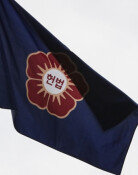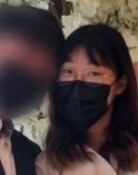Gyeongju earthquake boosted the tilting speed of Cheomseongdae
Gyeongju earthquake boosted the tilting speed of Cheomseongdae
Posted September. 19, 2016 07:14,
Updated September. 19, 2016 07:45

The National Research Institute of Cultural Heritage under the Cultural Heritage Administration says that the central axis of Cheomseongdae is tilting toward the north by 1 millimeter per year as the ground to the north has subsided. With an additional 20-mm tilting due to the earthquake this time, the center axis sank by 224 millimeters or 1.2-degree angle.
Also, the distance between stones of the tower is further widening as the lower part of ground subsides irregularly. According to the institute's 2011 report on the safety management plan for stone cultural properties, an average of 19-mm gap was found in all layers excluding the top. The heritage agency said that each stone was separated by 1-5 millimeters besides the ones constituting the top whose shape when viewed from above is that of the Chinese character 井 after the earthquake.
Many people point out the need to provide measures to ensure the structural safety of the tower. The agency says that there is a need to review the option to disassemble the tower for restoration. Seokgatop, which the National Research Institute of Cultural Heritage disassembled for restoration in 2012 and completed the repair work in August 2016, was not damaged by the earthquake thanks to the seismic design. As for Dabotap, of which staircase stones were subsided due to the earthquake, the member of framework is expected to be replaced with a new material. The stone pagoda was last repaired during the period of Japanese occupation.
김상운 기자sukim@donga.com
Headline News
- Med professors announce intention to leave hospitals starting Thursday
- Bridge honoring Sgt. Moon Jae-sik unveiled in Pennsylvania
- Chief of Staff Chung tells presidential secretaries to stay away from politics
- US FTC bans noncompete agreements
- N. Korea launches cyberattacks on S. Korea's defense companies







